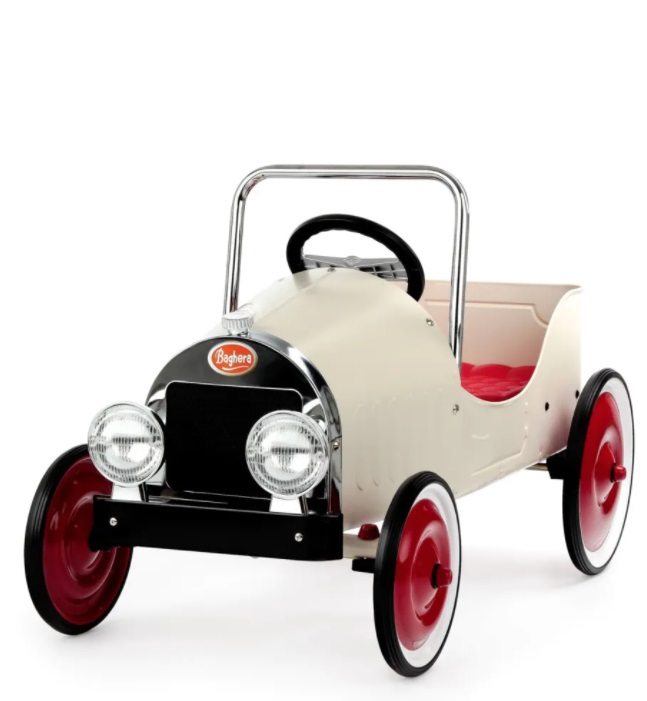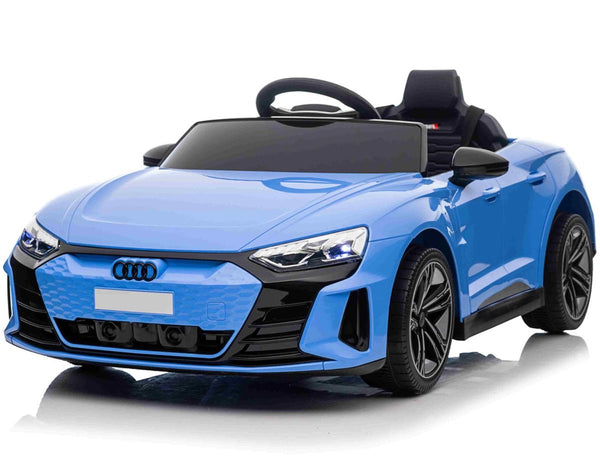New Facts For Choosing Kids Cars
New Facts For Choosing Kids Cars
Blog Article
What Ride-On Features Should I Be Considering? Pros And Cons
It is crucial to take into consideration safety features when choosing a ride with your children. These features will help keep them safe and entertained during playtime. Seat Belts and other safety features are essential.
Seat belts are a great way to keep your child secure when riding on the vehicle. This decreases the chance of them falling or being thrown from the vehicle while playing. They offer an extra layer of security, particularly during sudden stops or turns.
Cons - Some ride-on cars do not include seat belts, especially those made for children younger than. In addition, kids may find seat belts uncomfortable or restricting, resulting in refusal or resistance to using them.
Sturdy Construction
Pros - A ride-on vehicle made of sturdy and durable materials is more robust and resistant to damages that ensures long-term safety and reliability. It can withstand the rigors of the game and ensure stability when used.
Cons - Strong materials are usually costly and may not be feasible for certain families. Furthermore, heavier materials may hinder mobility and maneuverability.
Low Center of Gravity
Pros - Ride-on cars with a low center of gravity are less susceptible to tipping over, which reduces the chance of accidents and injuries. They provide greater stability and balance during maneuvers or turns.
Cons - Some rides-on-cars with lower centers of gravity could reduce their off-road capability or their ground clearance. This restricts their ability to operate in certain conditions.
Parents' remote control -
Pros: Remote-controlled cars allow parents to supervise and monitor their children's activities, giving an extra layer of supervision and security. Parents can intervene if an emergency occurs, navigate difficult terrain or prevent collisions.
Cons - Remote control for parents could limit children's independence as well as independence, since they depend on the guidance and support of their parents in play. Additionally, remote-controlled cars may cost more than manual models.
Speed Limiters
Pros: Ride-on cars with speed limits or adjustable settings for speed permit parents to control the maximum speed of the vehicle which reduces collisions and accidents. They may gradually increase speed of the vehicle as a child gains confidence and skill.
Cons – Some children will surpass lower speeds, which can lead to frustration and dissatisfaction. Additionally the speed limiter may not be available on all models. It could also require an additional feature or an accessory.
Safe Start Technology -
Pros- Safe start ensures smooth starts and stops of the car ride, minimising the risk for sudden jerks or movements that can frighten children or cause them to be unsteady. It makes riding more comfortable and safe.
Cons - Models with the safe start feature might cost more than those without. Additionally, children may feel that slow acceleration and deceleration are not as fun or exciting than instant starting and stopping.
Visibility Enhancements
Pros - Ride-on cars fitted with visible enhancements such working headlights, reflective materials or taillights improve the visibility of the vehicle. This is particularly true in dimly lit environments or conditions. They increase safety because they make the vehicle visible to pedestrians or other vehicles.
Cons: Visibility improvements may make the battery run more prone to drain or create more complexity in the design of the ride-on vehicle and increase the chance of maintenance or malfunctions.
When you consider these safety features and considering their pros and cons you can select a ride-on car that prioritizes your child's safety while providing the most enjoyable and enjoyable playing experience. See the top Audi kids car for more recommendations including ride ons, electric two seater cars, car on ride, two seater childrens electric cars, two seater electric cars, ride ons, race car toy car, childs ride on car, ride a toy, toy car toy car and more. . 
What Are The Assembly And Maintenance Conditions For Children's Ride-On Cars?
The ride-on vehicles for kids typically need some assembly and regular maintenance to ensure maximum performance security, longevity, and safety. Here are the assembly and regular maintenance requirements for child's ride on vehicles.
The majority of vehicles with ride-ons arrive partially assembled and need some assembly. This typically involves attaching the parts like the steering wheel and seats according to the instructions of the manufacturer.
Be sure to follow the assembly directions carefully, ensuring that all parts are securely connected and properly aligned. In accordance with the directions, complete the assembly using the equipment and tools provided.
Cleaning
To keep your ride-on car in pristine condition and operating effectively, it's essential to regularly clean it. Use a soft cloth or sponge soaked in mild soap and water to wipe down the exterior surfaces removing dirt, dust, and debris.
Be aware of areas that are prone for accumulation such as the tires or wheels, as well as the undercarriage. Use a brush and toothbrush to scrub the areas that are difficult to reach.
The use of harsh chemical cleaners, abrasive chemicals or high-pressure water sprays could damage electronic or paint components of the ride-on cars.
Battery Care –
The battery in the ride-on car needs to be properly cared for to ensure that it performs efficiently and lasts for as long as possible. Follow these tips regarding battery care
Make sure to fully charge your battery prior to and after every use to get the best out of it.
Beware of overcharging and not leaving the battery in the charger for extended periods. This can cause damage to the battery and decrease its lifespan.
When not in usage when not in use, store the ride on battery and car away from direct sunlight or extreme temperatures.
The battery terminals should be examined regularly for signs of corrosion and damage. They can also be cleaned with wire bristles or terminal cleaner, when needed.
Replace the battery if it's not holding a charge or if you notice indications of damage.
Tire Maintenance -
Check the tires regularly for indications of damage, wear or loss of air pressure. If necessary, you can make use of a bicycle air pump or an air compressor to blow up tires to the appropriate pressure.
Examine the tread pattern to see if there is any foreign object or debris which could lead to flats or punctures. Removing obstructions, and replacing damaged tires or repairing them when needed.
Lubricate the axles, wheel bearings and other components to ensure smooth rotation.
Periodic repairs and replacements
Despite routine maintenance, ride-on vehicles may require occasional repairs or replacement of parts because of wear and wear or damage caused by accident.
Be on the lookout for signs of malfunction or deterioration for unusual sounds or power outages, or an unpredictable behavior. It is possible to consult the manual for users or contact customer support for assistance for troubleshooting or repair.
Replace damaged or worn-out components promptly to avoid any further damage, and to ensure the safety and function of the ride-on vehicle.
Follow these instructions to maintain your child's ride-on vehicle and provide hours of fun and safe play for them. Have a look at the top rated discover more for McLaren kids car for website info including childrens electric cars, childrens ride on, toy ride, car toy toy, electric ride on cars, toy toy cars, toy with car, childrens electric cars, car electric ride on, cars pedal car and more. . 
How Do I Decide The Amount I Will Spend On My Child's Ride-On Car?
To set an appropriate budget for your kid's ride-on car, it's essential to think about a range of variables. This includes the features, durability, longevity as well as financial conditions. How do you set an amount for your ride-on vehicle and make the most of your investment Consider researching average prices
Research the average price for the model of kid's ride-on car you are interested in. Prices for different types can be found on online retailers, toy stores, and manufacturers' websites.
Choose Must-Have Feature to Have -
The features you choose will determine the price of your ride-on car. Options like working headlights, or realistic sounds may affect the price.
Prioritize your features by comparing your budget with the preferences of your child.
Take into consideration the durability and long-term sturdiness -
Look for ride-on cars that are made with durable materials. This means high-quality plastics and metals. They should be durable enough to stand up to the elements outside as well as the everyday use.
Review reviews and ask for advice from other parents to determine the longevity and long-term performance of various models. It could be worthwhile to invest in a better-quality vehicle before you buy it to save on expensive repair or replacement.
Compare prices from different retailers
Compare prices from various retailers to find the best deal. Look through online stores and local toy and department stores for discounts and bargain prices.
You can save money by keeping your eye on sales, clearances, and sales.
Factor in Additional Costs -
Take into consideration any additional costs with the purchase of a ride-on kid's car for example, shipping charges and taxes or other accessories (e.g., spare batteries, safety equipment).
Plan the cost for the entire amount that includes any equipment or maintenance costs.
Establish a Budget That Is Realistic
Create a realistic budget that is based on your current financial situation and research. This will allow you to align your priorities with your goals. Determine the maximum amount you're willing to invest in a ride-on car while considering the quality of features, durability, as well as the longevity.
Spending too much on unneeded features or items that don't add value to the play experience of your child is not advised.
Take into consideration the value over time Take into consideration the value over time
Evaluate the long-term value of the car that your child rides on in terms of its endurance as well as its versatility and capacity to evolve with your child. A top-quality car with a variety of features may prove to be more valuable over time than a lesser model that is less durable.
Create a realistic budget to purchase a ride-on car for children. Compare prices, features and durability. It is important to prioritize features that are essential for your child's fun and safety, while still remaining within your budget. See the recommended electric kids cars kidscars.co.uk recommendations for blog examples including ride of car, kiddies cars, ride of car, car electric ride on, car on ride, ride electric car, toy car, childrens digger, toy a car, childrens digger and more. .